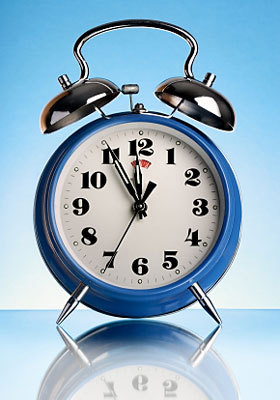
When you go to sleep on Saturday night set your clock back because Daily Savings Time ends on Sunday morning. And while you're at it change your smoke alarm batteries.
Ever wonder about the history of Daylight Savings Time:
"Although standard time in time
zones was instituted in the U.S. and Canada by the railroads in
1883, it was not established in U.S. law until the Act of March 19,
1918, sometimes called the Standard Time Act. The act also established
daylight saving time, a contentious idea then. Daylight saving time was
repealed in 1919, but standard time in time zones remained in law.
Daylight time became a local matter. It was re-established nationally
early in World War II, and was continuously observed from 9 February
1942 to 30 September 1945. After the war its use varied among states
and localities. The Uniform Time Act of 1966 provided standardization
in the dates of beginning and end of daylight time in the U.S. but
allowed for local exemptions from its observance. The act provided that
daylight time begin on the last Sunday in April and end on the last
Sunday in October, with the changeover to occur at 2 a.m. local time.
"During the "energy crisis" years, Congress enacted earlier
starting dates for daylight time. In 1974, daylight time began on
6 January and in 1975 it began on 23 February. After those two
years the starting date reverted back to the last Sunday in April.
In 1986, a law was passed that shifted the starting date
of daylight time to the first Sunday in April, beginning in 1987.
The ending date of daylight time was not subject to such
changes, and remained the last Sunday in October. The
Energy Policy Act of 2005 changed both the starting and ending dates.
Beginning in 2007, daylight time starts on
the second Sunday in March and ends on the first Sunday in November."
For a very readable account of the history of standard and daylight
time in the U.S., see
Ian R. Bartky and Elizabeth Harrison: "Standard
and Daylight-saving Time", Scientific American, May 1979 (Vol. 240,
No. 5), pp. 46-53.
